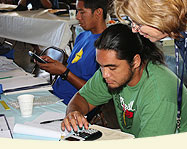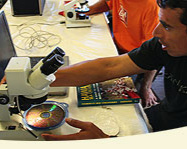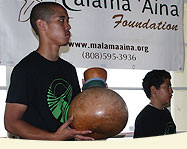Ho‘opili Program
Traditionally, Hawaiian Focused Charter Schools have lower achievement-levels than their public school counterparts due to the absence of curricula that seeks to integrate the Hawaiian culture and practices with the new western educational standards. In order for Native Hawaiian students not to fall behind their peers, they need both rigorous standards-based mathematics and science middle school education, and constructive exposure to the culture and practices of their homeland in a manner that enhances their standard education.
In September of 2013, the Mālama ʻĀina Foundation was awarded a Social and Economic Development Strategies (SEDS) grant from the Administration for Native Americans for their new Hoʻopili Program. The Hoʻopili Program was designed to help facilitate a connection between native Hawaiian cultural practices and the new Common Core and Next Generation Science Standards for Hawaiian Focused Charter Schools, specifically middle school students on the islands of Oʻahu, Molokaʻi and Kauaʻi. The Hoʻopili Program provides hands-on project based curriculum where by middle school students have an opportunity to interact with Hawaiian cultural practitioners while learning math, science, and language arts.
Project Goal
The goal of the Ho‘opili Program is to create a curriculum that will provide a bridge between Hawaiian culture and new Common Core and Next Generation Science Standards to strengthen the ability of our future generations to exist successfully in both the Hawaiian and Western World.
Objective One
Over a period of 36 months, prepare up to 50 Hawaiian Focused middle school teachers and approximately 900 Hawaiian Focused middle school students for academic success by developing, implementing, and evaluating a Native Hawaiian culture-based curricula containing 120 lesson plans that will meet the new Common Core and Next Generation Science Standards.
Objective Two
Over a period of 36 months, enable up to 15 Hawaiian cultural practitioners to utilize part(s) of the Ho‘opili Program Curriculum with middle school students at specific cultural sites.
Sailing at Kaiona Beach, Oʻahu with star compass made by the students.







